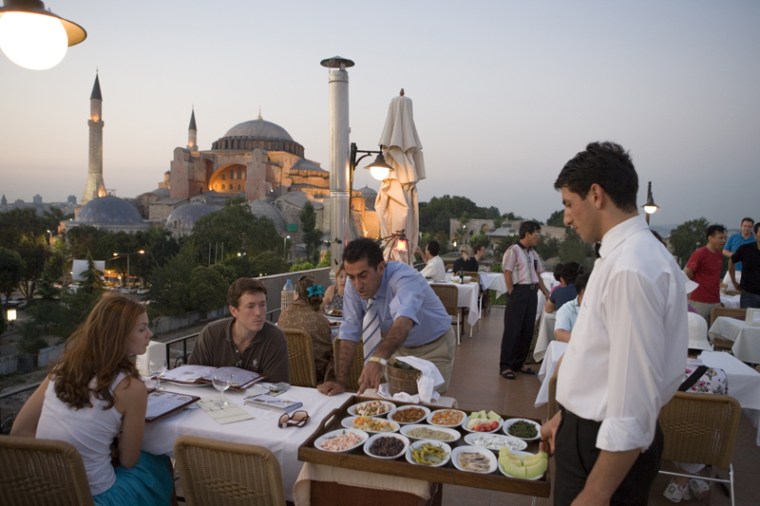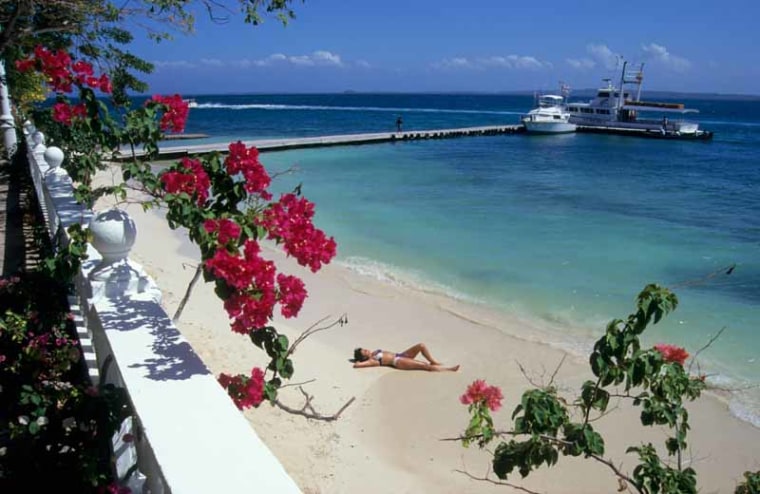Think for a moment about the word “value.” It originates from an Old French verb, valoir, which means, to be worth.
Today it is used to describe the financial measure of something’s true worth. A meal of truffled foie gras and roast Maine lobster may be rare and delicious, but if the price-tag is too high, which it often is, it offers little value. Ditto for a bargain cheap burger and fries: You get what you pay for.
But an inexpensive lobster meal for half the cost? Bingo.
Rich or poor, consumers are becoming increasingly savvy and virtually everyone these days knows how to find a deal and examine the value of it. This is especially true in the travel world, where hyper-customizable deal booking Web sites, luxe-for-less newsletters, and airline, spa and hotel e-sales are filling junk mail boxes on a daily basis.
But this year it’s been a bit difficult to stay abreast of where the best vacation values are found. Collapsing economies, wildly fluctuating exchange rates, and security issues in long stable countries (Kenya, Thailand, and India) have made choosing an affordable luxury destination especially challenging for 2009.
The fiscally promiscuous jet set who just a few years ago spent leftover currency on duty-free extras like bottles of Johnnie Walker and Chanel, have shrunk considerably, leaving behind a yawning gap between the coaches and first classes of the world, leading many to speculate that the golden age of Internet deals and luxury value vacations has ended.
Is this true? Absolutely not.
Luxury — more than ever before — is on sale. Travelers just need to know where the dollar is strongest — a math that has been erratic and considerably hard to follow during these last few months.
“Shrewd travelers looking to get the most for their money naturally gravitate to places where the U.S. dollar is strongest — as such, destinations in South America and Southeast Asia have gained leverage over once-popular locales in price-fluctuating Europe,” says editor Elissa Richard, of ShermansTravel.com, a deal-based web site and magazine that’s built its brand upon the concept of “luxury value.”
This two-pronged concept has become remarkably relevant to even the wealthiest of American travelers. Luxury value is about getting more for less, and Web sites like ShermansTravel.com, CheapFlights.com and others have been using a combination of science, math, airfare costs and good old-fashioned wanderlust to determine “luxury value” and examine which destinations (or splurges to use Sherman’s lingo) are “worth it.”

It’s a formula that measures experiential factors like the density of UNESCO sites, the variety of museums, or the sexiness of beaches, against the costs of dining, shopping, hotels, and last but not least, airfare costs and dollar exchange rates — the granddaddy factors of all deals.
Recently, however, the U.S. dollar has had remarkable gains against numerous currencies, adding a new twist to this formula and opening up new destinations and redefining old ones that were too expensive in recent years.
The dollar has nearly doubled against the Icelandic krona, which lost its value by 91 percent in 2008, bringing hotel rooms and spa packages down in price significantly. In the last year the dollar has also seen sizeable growth against the Turkish lira (30 percent), the South African rand (50 percent) not to mention major gains against existing value destinations like Mexico (25 percent), Chile, (30 percent) and India (25 percent).
These currency gains alone have slashed prices for African safaris, Bosporus spa treatments and luxury trains in Rajasthan. Even the British pound has slid down 37 percent against the dollar while the Euro continues to inch back down a little bit every day.

When you add promotional discounts to the mix, you’re getting a significant luxury value. High-end hotels are making shifts to accommodate the need for more value travel. Four Seasons Resorts for instance, added a “Stay 2 Nights, Get the 3rd Free” promotion at several of their properties while many other luxury properties are lowering their prices after staunchly resisting discounts.
“Many big hotel chains initially refused to lower their rates,” says a hotel publicist who wished to remain anonymous, “but we’re starting to see a small window of deeply discounted sales and a lot of last-minute hotel specials are suddenly popping up.”
Meanwhile more emerging destinations like Colombia and Laos continue to attract new tourism growth in spite of steadier economies. Both have seen considerably increased interest in airfare booking Web sites. “Colombia has increased in hits by 11 percent, while Laos has seen a 17 percent increase in hits,” says Kellie Pelletier at Kayak.com, the de facto search engine for low cost airfares.
Travelers are indeed following the strong dollar wherever it goes.
Finally, in addition to the economic turmoil that’s swept the globe, less obvious factors like jet fuel costs and the EU-U.S. Open Skies agreement have radically affected the costs of airfare. “In early 2008, airline profit margins were built around $70 per barrel of jet fuel. But in July ’08 prices hit their peak at $147 per barrel,” says Carl Schwartz, Cheapflights.com’s Chief Travel Officer. “It’s hard to predict jet fuel costs,” he continues from the Boston office, “but the airlines are renegotiating contracts for 2009 right now at much lower prices.
That mixed with a strengthening U.S. dollar suggests that ‘09 is shaping up to be a year full of great deals for travelers, especially on the international front.” That’s valuable news that all of us like to hear in these tough times.
